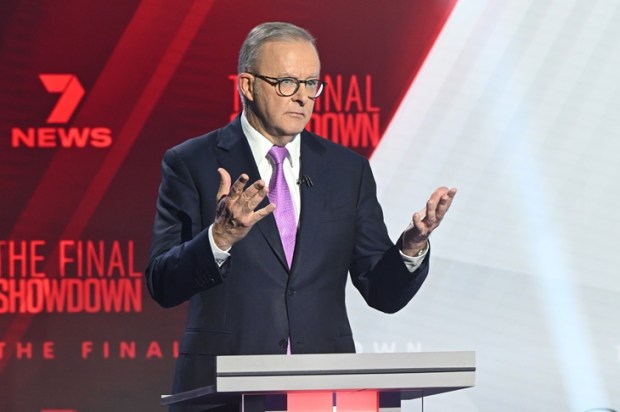See Saw Margery Daw,
Jacky shall have a new master;
Jacky shall earn but a penny a day,
Because he can’t work any faster.
The first reference to this rhyme is 1640. It describes an iron law that payment must be related to productivity. This is inevitably so for the economy as a whole, and is even conceded by many of the politicians and IR experts who foster legal machinery to boost workers’ earnings above those that would emerge in a competitive market.
The case rests on ‘market failure’.
The term is bandied about regularly by those who see imperfect outcomes and those who want to change the benefits different parties obtain from market transactions. But this fails to recognise the ‘government failures’ that emerge from alternative approaches.
In fact, labour market failure only truly occurs when there is a form of monopoly in place. Given the hundreds of thousands of different hirers and millions of workers there are very few areas of natural monopoly. These are confined to the labour supply where workers with highly specific skills or talents like rock stars, pipeline welders, and IT systems engineers, (all of whom generally command high remuneration levels). There are however areas where monopolies can be fashioned by preventing market entry, but this requires government policy or acquiescence.
The most notorious area of effective monopoly restraint is in building and construction where violence is used to prevent non-unionised workers offering their services and standover tactics are used against employers who seek to break the union-imposed monopoly. The elevated level of wages and other costs creates a 30 per cent cost premium, a premium that is absent from the non-unionised house building sector.
Under Australia’s IR system, thousands of ‘awards’ determine the remuneration of about 20 per cent of employees (30 years ago it was 80 per cent); registered collective agreements set the wages for a further 40 per cent with individual agreements covering the remaining 40 per cent. Although the average employee earns about a third more than the Award rates, in many areas the Award is the paid rate.
Political attention has focused on different payments for the same job. A union campaign pointed to some airline cabin staff doing the same job on the same plane as others but earning only half as much. Senator Roberts cited mining workers getting paid a $40,000-a-year difference depending on whether they were employed directly or through labour hire. Describing this as ‘wage theft’, he introduced the Fair Work Amendment in 2022 to bring labour hire workers pay levels to the same or greater than directly employed workers. His objective was to overcome ‘a failure of balanced market power’.
These are among countless other examples of apparently anomalous wage outcomes but in all cases the parties involved accepted the contracts willingly. Criticism is targeted at the employer paying some workers less than others – in no cases is there a suggestion that the higher earners are ripping off the employer!
The firm doing the hiring will seek to minimise its outlays. If it is cheaper to do so through contractors that will be the preferred route. In practice, most firms would want a balance between ‘permanent’ employees and workers hired under more flexible contracts. If the contractors do not obtain a premium wage to compensate for losing out on holiday pay loadings and other benefits this means the ‘permanent’ employees’ wages have been pushed above their market rate. Naturally, the workers getting lower remuneration will be envious of their more fortunate fellow workers
The government has now passed the two ‘Closing Loopholes’ Acts. Central to them is ‘same job, same pay’ for labour hire workers and enhanced workplace delegate rights including rights over prospective union members. Yielding to pressures, Qantas is levelling up its different wage settings at a reported annual cost to profits of $60 million.
Aside from loading the dice against employers, the Act introduces additional costs of complexity. In this respect, Freehills quips, ‘Make friends with a good IR lawyer – you will need them.’ The additional costs bring no corresponding economy-wide benefits.
And the ACTU is moving to its next agenda item: scrapping youth wages, illustrating a mindset that the level of wages has no effect on employment levels and no relationship to the productivity of those receiving them.
As the Closing Loopholes Act cannot conceivably have a positive effect on productivity, its goal of re-weighing the labour market outcomes can only be brought about by lowering profits. To the extent that this is successful, it would mean lower new investment levels and further reducing productivity.
For the ALP politicians and the unions, the key issue is to reverse the decline in union membership – down to about 8 per cent in the private sector – by forcing a de facto unionisation of the gig/contractor workforce. Union funding of the ALP, directly and indirectly, gives it a commanding advantage in terms of electoral marketing and one that is being eroded.
Labor’s IR policy adds to other productivity-suppressing economic policies put in place to foster support amongst sections of the economy. These include weaponising environmental regulations to prevent new mining, (while emasculating environmental protections in the case of wind and solar energy); subsidising wind, solar and green hydrogen; and squeezing irrigators’ water availability. The early outcome has been six quarters of declining national productivity.

























